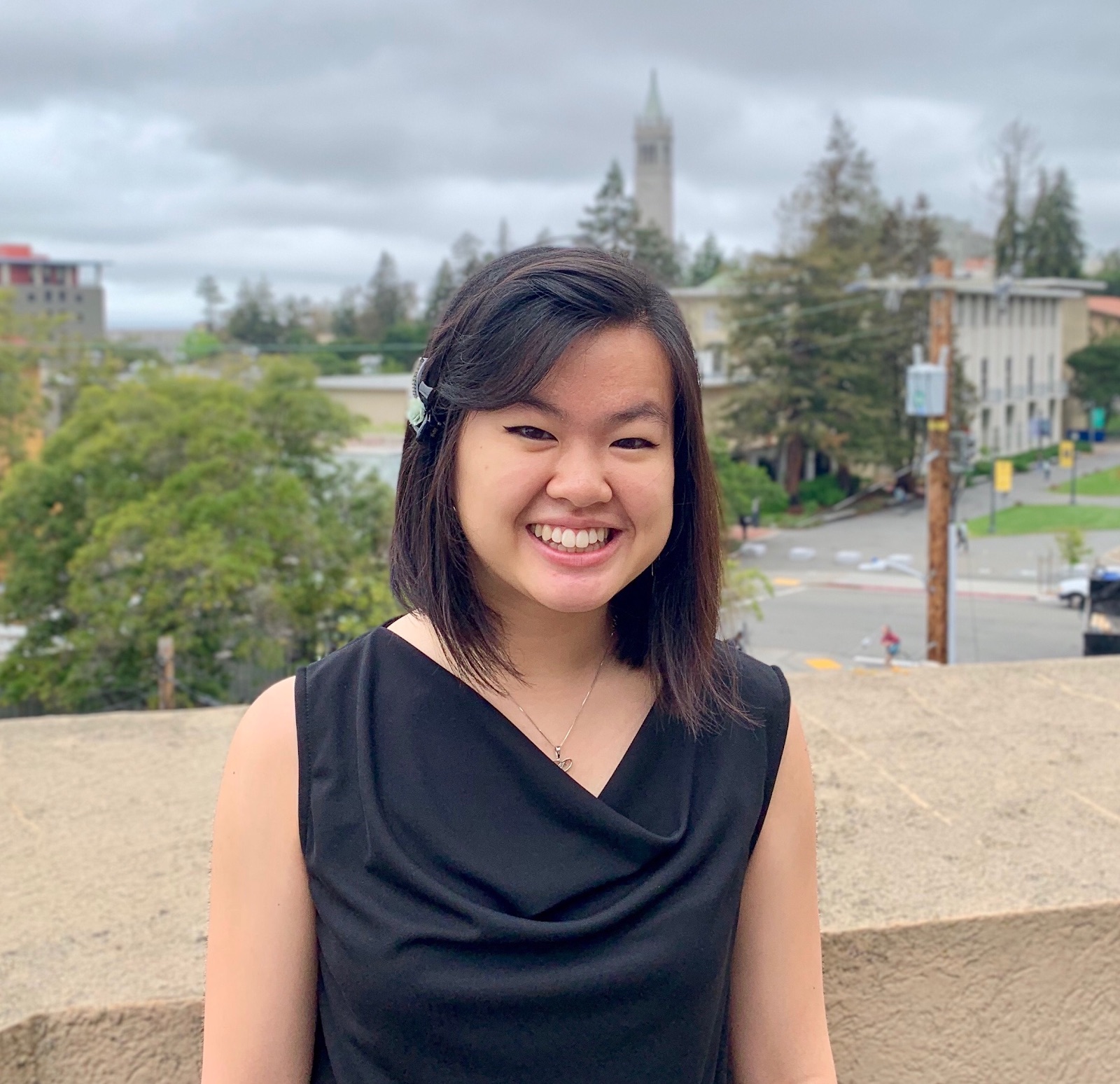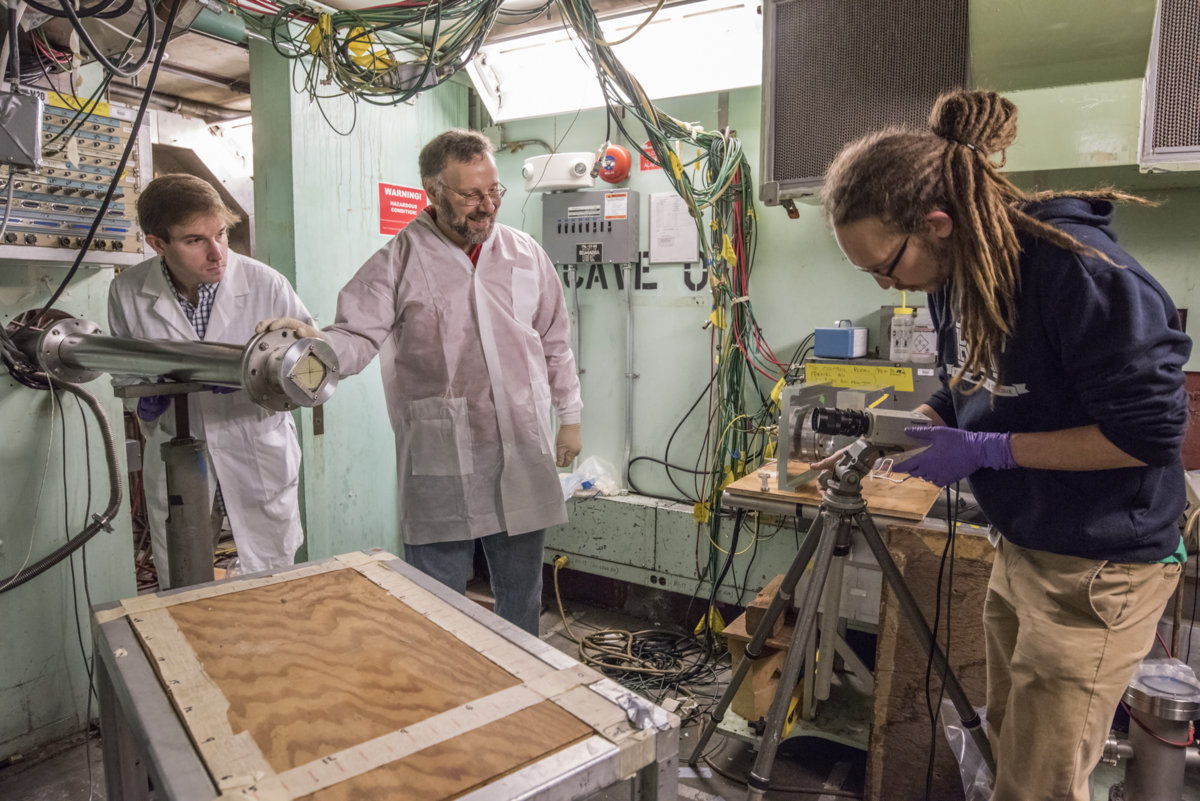“A Story of Science”
(Undergraduate Research Apprentice Program, Spring 2019)
By Caitlin Iswono
Caitlin Iswono is a rising junior at UC Berkeley majoring in Chemical and Biomolecular Engineering. In the Spring 2019 semester, Caitlin worked with historian Roger Eardley-Pryor of the Oral History Center and earned academic credits as part of UC Berkeley’s Undergraduate Research Apprentice Program (URAP). URAP provides opportunities for undergraduates to work closely with Berkeley scholars on the cutting edge research projects for which Berkeley is world-renowned. Caitlin provided valuable research for Eardley-Pryor’s science-focused oral history interviews. Here, Caitlin reflects on her URAP experience in the Oral History Center.

As a chemical engineering student at the University of California, Berkeley, I usually write technical lab reports and experimental analyses of scientific data. But last winter, before the Spring 2019 semester, I decided to examine science from a different perspective. While glancing through different topics of interest for a prospective Undergraduate Research Apprentice Program (URAP) project, I became fascinated by the science interviews conducted by the Oral History Center. Science is perceived to be objective and impartial, based only on “real facts.” But what are the personal reasons behind a scientist’s work? And what are the human elements that help produce scientific facts? After working on several oral history projects this semester, I learned that the process of science is actually a story, and every experiment has a riveting history and person behind it.
My URAP project this semester consisted of research preparations for oral history interviews conducted by Roger Eardley-Pryor, a historian of science, technology, and the environment in the Oral History Center. I conducted background research on the scientific work of two different kinds of chemists. Alexis T. Bell, a renowned professor and former chair of UC Berkeley’s Department of Chemical and Biomolecular Engineering, was one of two oral history interviewees whose research I examined and explained. Since joining Berkeley’s faculty in 1967, Alexis Bell has and continues to conduct complex and comprehensive research in hydrogenation, electrocatalysis, zeolite synthesis, and theoretical applications for chemical engineering. His reports and publications are meticulous and highly revered in academia. Bell’s scientific work is prominent in the scientific world. But what was his personal story?
This question is what I helped explore during the Spring 2019 semester. Professor Bell recorded his scientific methods and experimental results in his numerous publications, but the personal story behind his work would best reveal itself through his oral history interviews. My task was to conduct background research on Bell’s publications and ask fruitful questions on the driving forces behind his vast range of experiments. Together, historian Roger Eardley-Pryor and I researched topics including the inspirations, funding, technological advancements, and partnerships in each of Bell’s projects. By reading Bell’s scientific articles and designing questions that linked the scientific work with his motivations, I learned that science cannot be fully comprehended unless the driving force behind the published lab report is made clear. These “behind-the-scenes” and human connections within the scientific process contribute to the world of academia in ways just as significant as the scientific analyses.
My background research on another chemist named Michael Schilling unveiled additional fascinating stories. As a senior scientist at the Getty Conservation Institute, some of Schilling’s projects included preserving hand-drawn Disney animation cels as well as identifying biological materials used to make ancient Asian lacquers that, later, eighteenth-century French craftsmen incorporated into furniture for King Louis the XIV. Schilling’s riveting analytical chemistry seemed far afield from the work I imagined most materials scientists do. I grew increasingly interested to hear Schilling share his personal history and explain how he came to work on these projects.
My initial reading of Schilling’s published work left me curious to how and why he conducted such diverse projects in art conservation. I grasped the technical aspects of Schilling’s work, but I found myself asking “Why did he do this as a chemist? Why was this his topic of interest and who initiated it?” As I learned more about Schilling’s personal background and the steps he took to achieve his career accomplishments, I could better understand the timeline and motivations behind his work. Those motivations and the processes before lab work began are not found in published reports, but only through Schilling recounting his own history and life contexts. Here was another example of science and oral history joining together to reveal the human aspects in the scientific process.
Assisting UC Berkeley’s Oral History Center as an undergraduate research apprentice this semester was personally rewarding. Weekly meetings with Dr. Roger Eardley-Pryor helped me grasp more than just the “technical” parts of science. Analyzing lab reports is not enough to understand the bigger picture and the human processes of science. Instead, we sought answers to “Why? For what purpose? How? For whom? With whom?” Questions like these can help explain why and how new scientific knowledge is produced.

I also learned valuable skills and broader applications for the scientific knowledge taught in my chemical engineering courses. For example, while researching different analytical methods of mass spectroscopy for Alexis Bell’s oral history, I realized I had prior experience implementing these methods in my own laboratory courses. Although classes taught me the procedures and practical uses of this instrument, they lacked a broader perception on the people who use it and why they did so. While assisting these oral history projects and seeking insight into the entire scientific process, I discovered the driving forces behind an experiment, not merely the technicality and practice of it. Motivations, people, and personal connections provide backbone to the scientific process. As a result, I can now practice my lab class experiments and analyze why I’m conducting it, to look beyond the procedures, to find its purpose.
My URAP experience in the Oral History Center helped me become more open-minded and curious about different fields of science. My perceptions of the scientific process broadened beyond the laboratory. In short, I discovered that science has human history. On its surface, science provides facts based on experimental results and controlled environments. But behind that veil is a human who discovered that scientific knowledge. That person’s individual experience and perspective help explain more fully the meaning their science strives to comprehend. Without the history and influences of an experiment, questions remain unanswered. The combination of experimentation, observation, history, and human experience—all together—produce the world of science. And that is the story that we must read. That is the story I helped shape last semester at the Oral History Center.
— Caitlin Iswono, UC Berkeley, Class of 2021